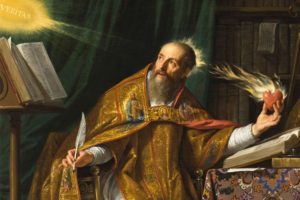When evangelicals engage discussion about Catholic theology, a rather predictable line of reasoning often emerges. It goes like this: the council of Trent says thus, Catholic teaching doesn’t change, so Catholics believe…. There is validity in this logic. Ecumenical councils such as Trent are binding, even today. However, we often ignore the fact that over four subsequent centuries have expanded Catholic thinking in profound ways. To understand these developments, even on a cursory level, provides invaluable insights into the challenges and opportunities for gospel witness among our Catholic loved ones.
The most significant development in Catholic thought since Trent occurred in Vatican II (1962-65). On this fiftieth anniversary year, as discussions about the movement’s legacy continue to percolate, it is a fine opportunity to become better acquainted with it. Toward this end, we have the privilege of hearing from Dr. Leonardo De Chirico, Italian pastor and scholar, who visited Wheaton for an interview last month. Leo’s doctoral thesis on the topic of Vatican II has been published under the title Evangelical Theological Perspectives on Post-Vatican II Roman Catholicism.




